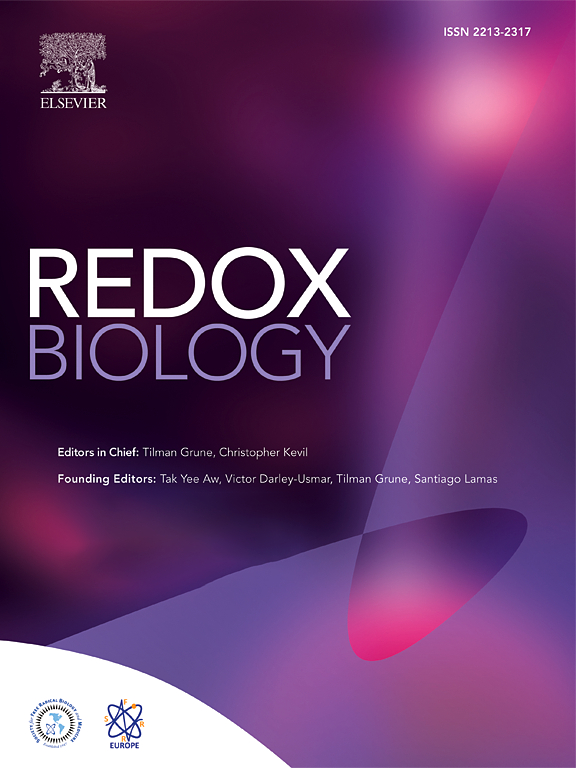Revised model for cell cycle regulation by iron: differential roles between transferrin and ferritin
IF 10.7
1区 生物学
Q1 BIOCHEMISTRY & MOLECULAR BIOLOGY
引用次数: 0
Abstract
Iron is essential for neoplasms including natural killer (NK) cell lymphoma, and mainly supplemented by transferrin and stored by ferritin. Although accumulating studies had demonstrated that iron chelation arrests cell cycle progression at G1 phase, our previous studies showed the induction of DNA double strand break at S phase cell cycle without G1 arrest by selective inhibition of cellular transferrin uptake, indicating that the existence of some undiscovered differences in the roles of the two major iron sources for cell cycle regulation. In this study, we identified a novel cell cycle regulation of transferrin binding iron in NK cell lymphoma. Blocking transferrin uptake induced S phase arrest owing to the dysfunction of nascent DNA synthesis. Moreover, canonical G1 arrest was observed with mitochondrial dysfunction followed by downregulation of mTORC1 and dephosphorylation of Rb only when intracellular iron storage was deprived by iron chelation. These results suggested that iron is critically involved in at least two steps of the cell cycle: the S phase and G1/S transition. Especially, considering the toxicity of mitochondrial dysfunction to normal cells and cell cycle dependent manner of S phase-specific DNA damage due to selective inhibition of transferrin uptake, transferrin receptor blockers are thought to be more suitable than iron chelators as antineoplastic agents. Overall, the current canonical model of cell cycle regulation by iron requires revision.

铁调控细胞周期的修正模型:转铁蛋白和铁蛋白之间的差异作用
铁是包括NK细胞淋巴瘤在内的肿瘤的必需元素,主要由转铁蛋白补充,并由铁蛋白储存。尽管越来越多的研究表明,铁螯合在G1期阻滞细胞周期进程,但我们之前的研究表明,通过选择性抑制细胞转铁蛋白摄取,在S期细胞周期诱导DNA双链断裂,而不阻滞G1期,这表明两种主要铁源在细胞周期调节中的作用存在一些未被发现的差异。在这项研究中,我们发现了NK细胞淋巴瘤中转铁蛋白结合铁的一种新的细胞周期调节。由于新生DNA合成功能障碍,阻断转铁蛋白摄取诱导S期阻滞。此外,只有当铁螯合剥夺细胞内铁储存时,才会观察到典型的G1停止,并伴有线粒体功能障碍,随后出现mTORC1下调和Rb去磷酸化。这些结果表明,铁至少在细胞周期的两个步骤中起关键作用:S期和G1/S转变。特别是,考虑到线粒体功能障碍对正常细胞的毒性以及选择性抑制转铁蛋白摄取导致的S期特异性DNA损伤的细胞周期依赖性,转铁蛋白受体阻滞剂被认为比铁螯合剂更适合作为抗肿瘤药物。总的来说,目前由铁调控细胞周期的规范模型需要修订。
本文章由计算机程序翻译,如有差异,请以英文原文为准。
求助全文
约1分钟内获得全文
求助全文
来源期刊

Redox Biology
BIOCHEMISTRY & MOLECULAR BIOLOGY-
CiteScore
19.90
自引率
3.50%
发文量
318
审稿时长
25 days
期刊介绍:
Redox Biology is the official journal of the Society for Redox Biology and Medicine and the Society for Free Radical Research-Europe. It is also affiliated with the International Society for Free Radical Research (SFRRI). This journal serves as a platform for publishing pioneering research, innovative methods, and comprehensive review articles in the field of redox biology, encompassing both health and disease.
Redox Biology welcomes various forms of contributions, including research articles (short or full communications), methods, mini-reviews, and commentaries. Through its diverse range of published content, Redox Biology aims to foster advancements and insights in the understanding of redox biology and its implications.
 求助内容:
求助内容: 应助结果提醒方式:
应助结果提醒方式:


